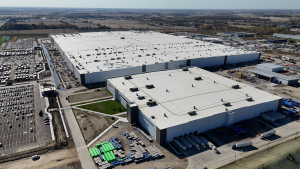REGINA, SASK – Modest growth will come to Saskatchewan’s construction and maintenance industry with the residential sector picking up the pace as non-residential projects are completed, a new labour market forecast released by BuildForce Canada shows.
In the coming year, BuildForce expects Saskatchewan’s residential and non-residential markets to diverge, with a recovery in new residential housing construction offsetting declines in the non-residential sector.
BuildForce Canada’s 2020–2029 Construction and Maintenance Looking Forward provincial report forecasts that the pace of overall employment declines is expected to stabilize in 2020–2021, bolstered by stronger exports that support moderate economic growth and an anticipated recovery in the construction of new housing and industrial, commercial, and institutional (ICI) buildings.
“We expect a period of moderate growth to follow, with new resource-sector investments anticipated after 2021,” says Bill Ferreira, executive director of BuildForce Canada. “That demand is expected alongside a continued recovery in new-housing construction driven by stronger population growth.”
Overall, construction employment is expected to grow modestly by the end of the 2020–2029 scenario period, with bigger gains concentrated in residential and ICI building construction.
In the non-residential sector, the completion of the Enbridge Line 3 pipeline and a decline in highway and bridge work should contribute to a modest decline in employment between 2020 and 2021. From 2022 to 2024 non-residential requirements are expected to rise by 2,400 workers (+8.6 per cent), driven in part by the anticipated start of proposed major potash mine expansion and gas plant projects.
“As the decade progresses, however, non-residential employment demands will increasingly be driven by the construction of ICI buildings and maintenance work as major engineering project construction declines from peak levels,” said Ferreira.
The non-residential labour force finishes the forecast period with an additional 600 workers compared to 2019.
In the residential sector, BuildForce expects modest gains in renovation and maintenance activity, alongside increased new-home construction, to increase the residential labour force by an estimated 2,300 workers over the decade. New-housing starts are expected to rebound from a record low in 2019 to 5,800 units by 2029, with growth projected to ramp up after 2021 driven by stronger overall economic growth and rising household formations.
The anticipated retirement of just over 9,100 workers dominates hiring requirements over the next decade. The availability of 9,500 new-entrant workers aged 30 or younger is projected locally. However, BuildForce noted that Saskatchewan’s ability to meet future hiring requirements of nearly 11,500 workers from the local population is dependent on limiting the outflow of skilled workers during periods of weaker growth.
“Across Canada, other provinces will be demanding the trade skills that Saskatchewan workers can supply,” said Ferreira. “The industry should be mindful about keeping the province’s workers engaged locally and ensuring that they can make the transition between non-residential and residential markets.”
The development of skilled tradespersons in the construction industry takes years, and often requires working within a provincial apprenticeship program. More than 10,400 apprentices registered in the 16 largest construction trade programs in Saskatchewan between 2013 and 2019, with nearly 7,400 completions reported during this period.
BuildForce anticipates that based on current apprenticeship completion trends, several trades may be at risk of not keeping pace with retirement levels that could potentially lead to an undersupply of journeypersons in some trades by 2029. Boilermakers, carpenters, refrigeration and air conditioning mechanics, scaffolders, sheet metal workers, and welders may be at higher risk. The report noted that an ongoing commitment to training and apprenticeship development will remain necessary to avoid potential future skills shortages in the industry.
The report highlighted that creating a sustainable labour force will also require the construction and maintenance industry to increase recruitment from groups traditionally underrepresented in the current construction labour force, including women, Indigenous people, and new Canadians.
In 2019, approximately 6,300 women were employed in Saskatchewan’s construction industry. Of the total, nearly 37 per cent worked directly on construction projects. When measured as a percentage of the overall 39,800 tradespeople employed in the industry, women accounted for only 5.7 per cent of on-site employment.
New Canadians are also underrepresented in the province’s labour force, accounting for little more than 8 per cent of the province’s construction workforce. Between 2020 and 2029, the province is expected to welcome more than 132,000 newcomers, making the immigrant population a key driver of labour force growth. Increasing the participation rate of both these groups would go a long way to help the industry address future labour force needs.
The province also has one of the largest percentages of Indigenous construction workers in Canada, second only to Manitoba. Approximately 12 per cent of the province’s construction labour force is made up of Indigenous people, with about 85 per cent working directly on construction projects. Meeting future labour market needs may also require Saskatchewan’s construction industry to increase its recruitment of Indigenous workers.










Recent Comments
comments for this post are closed